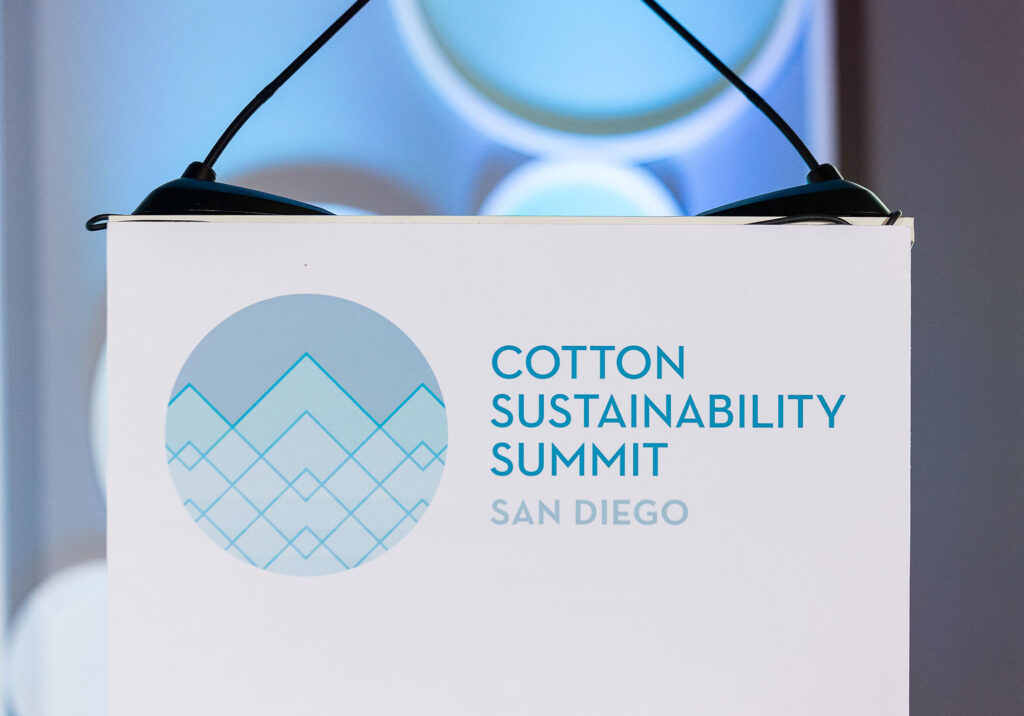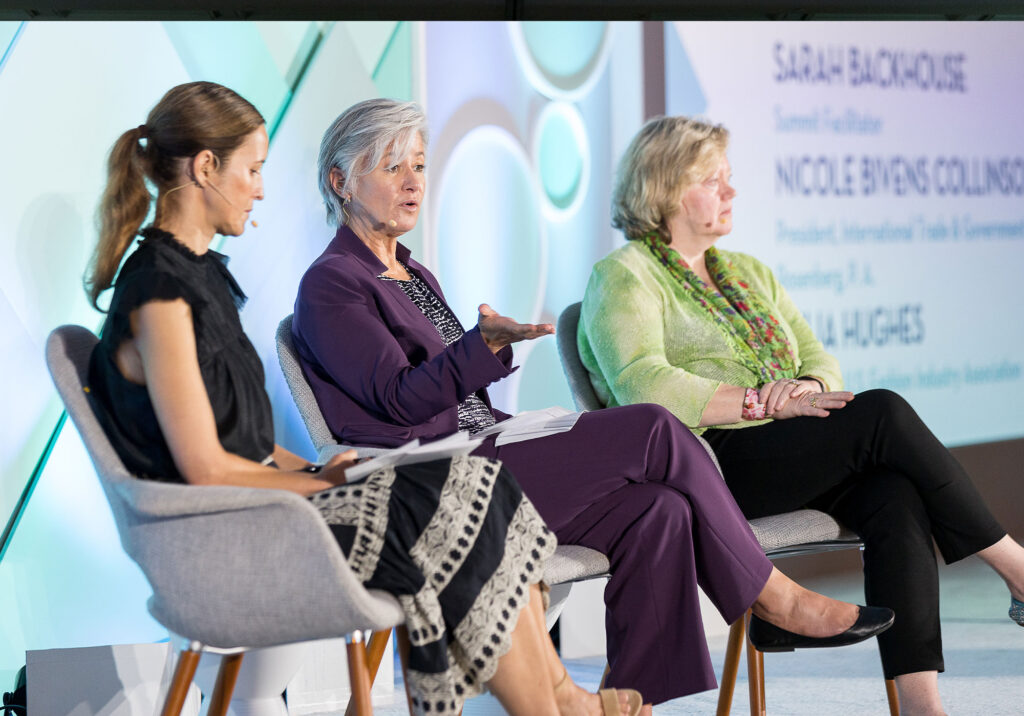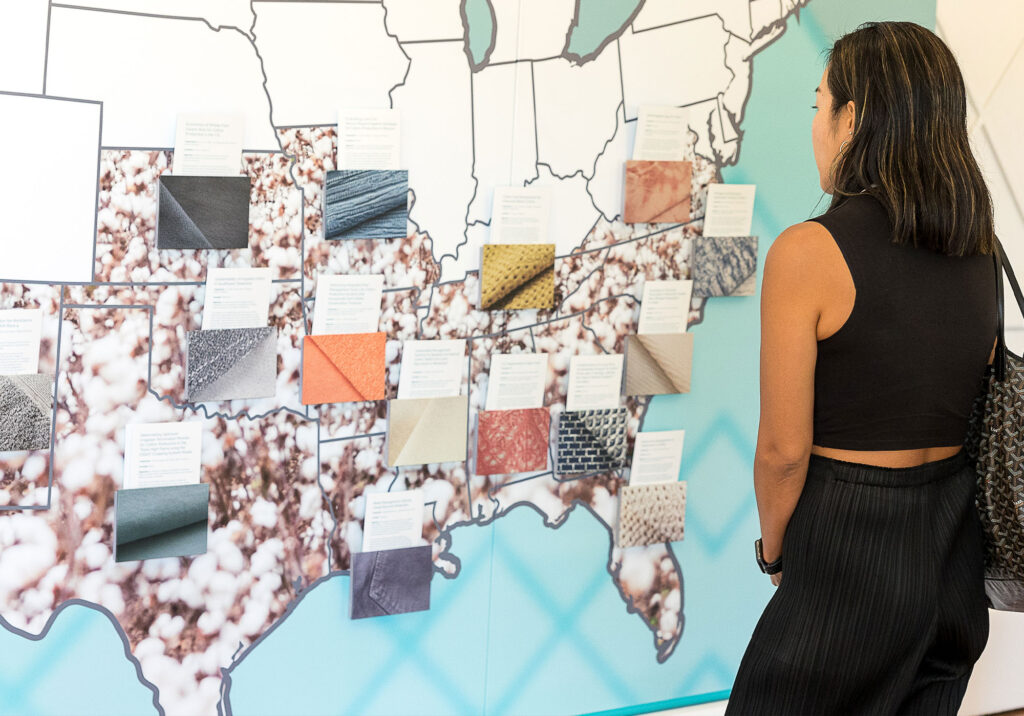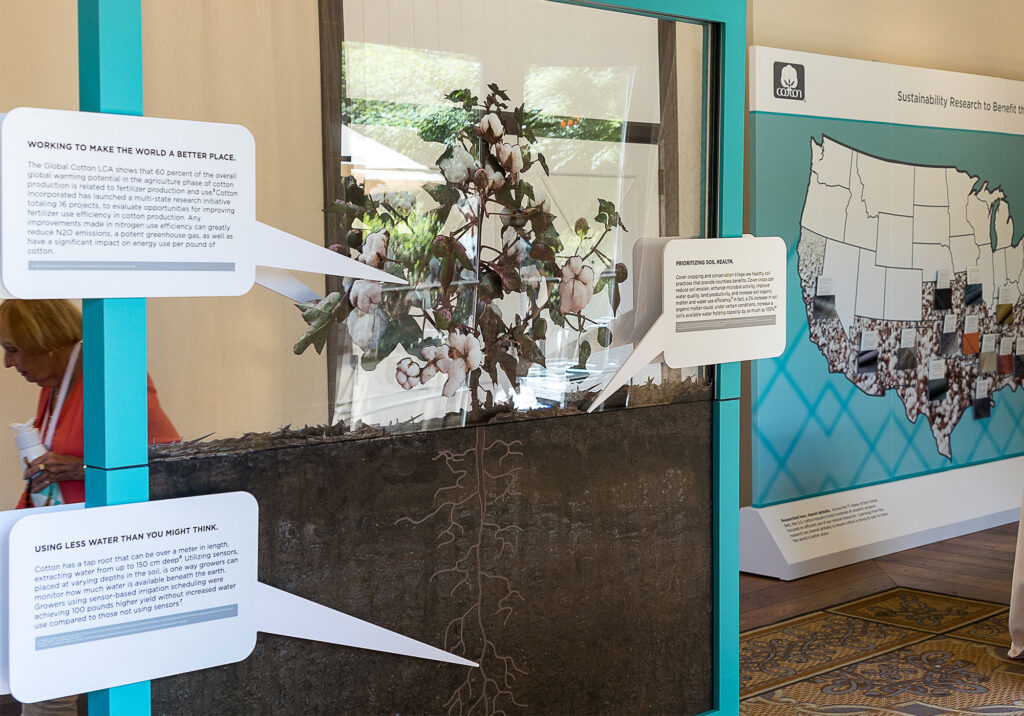
About 100 buyers, designers, and sustainability officers with major fashion brands and retailers joined sustainability luminaries and experts in soil health, supply chain, circularity, and cotton agriculture at the 2022 Cotton Sustainability Summit.
The two-day invitation-only conference, hosted by Cotton Incorporated and the Cotton Board, was held September 21-23 in La Jolla California. The summit is one example of Cotton Incorporated’s role as a leader and convener in the textile industry. The convergence of attendees created a unique platform for exchanging ideas to address sustainability issues, from regenerative agriculture to circularity to waste reduction for members of the textile and fashion industries.
After a poolside welcome reception Wednesday night, the event began Thursday with Sonja Chapman, Chairwoman of the Cotton Board and J. Berrye Worsham, President and CEO of Cotton Incorporated, each delivering opening remarks to welcome the guests. Chapman is the Director of International Movement and Import Preservation at Golden Touch/Jaclyn Groups and an Associate Professor at the Fashion Institute of Technology in New York City.



Chapman’s comment that “Progress will only happen if the knowledge is shared,” was echoed by keynote speaker Jason Clay, Senior Vice President for Markets and Executive Director of the Markets Institute of the World Wildlife Fund, who kicked off the sessions with some eye-opening statistics on GHG emissions and weather impacts on agriculture. Clay implored guests to think differently in order to be transformational and identified knowledge-sharing platforms as a key ingredient to help improve agriculture on a global scale.
Over Thursday and Friday, seven moderated panel discussions covered a wide breadth of topics, including:
- Making Bold Moves on Climate
- Measuring Climate Risk in the Cotton Industry
- The Next Frontier of Agriculture
- Creating Targets and Achieving Them Through the Supply Chain
- U.S. Cotton: Setting a New Standard in Sustainability
- Cotton’s Many Lives
- Traceability and Transparency in the Value Chain
Panelists included soil health experts and sustainability authorities, as well as cotton producers from Louisiana and California, who shared their stories of stewardship and their long-term relationships with the land and with their farm employees.



Sustainable design and development pioneer Bill McDonough gave the keynote on the final day of the conference, encouraging attendees to move away from a language of negativity—as in reducing, net-zero, stopping—and move toward an approach of achieving possibilities. “Stop with the misery,” he said, “Put down those tools. Move on.” He explained to the audience that “Regenerative is the world that you live in. Sustainability is intergenerational stewardship.”
McDonough championed extending producer responsibility and regenerative farming, stating that “the soil becomes the capital of our culture. All sustainability is local.” The relationship with the customer is the most important one,” he added, and invited the audience to “design for reuse; the next use, recycling, return to cycles.”
It will take us all,” he said. “It will take forever—that’s the point. Nature doesn’t have a design problem, people do.”
Participants were engaged throughout the event and audience questions spurred numerous conversations regarding clothing recycling and waste; soil health; regulations and their impact on growers, brands, retailers, and consumers; circularity; transparency, and supply chain issues.



Cotton Incorporated developed three displays for participants to explore during the summit; a map of cotton sustainability research featuring cotton sustainability research projects in all states of the Cotton Belt; a three-dimensional Climate Smart display of the cotton plant and its root system, describing the sustainable aspects of the cotton plant; and an interactive Climate Interactive En-ROADS Climate Solutions Simulator, which allowed summit attendees and speakers to manipulate inputs to see how their selections affected global warming. Participants could select among 18 inputs such as increasing or decreasing methane emissions, renewable energy, electrification of transportation, population and economic growth, carbon removal, and technological advancements to learn how these increases and decreases changed the global warming trend.
Themes that emerged throughout the summit included producer responsibility, understanding the complete chain from agriculture to end of life, collaborating to solve sustainability and circularity issues, educating consumers, and the urgency of acting now.
Collectively, the event energized and charged sustainability leaders in the textile and apparel industry to think differently and collaboratively to create strategies that lead to large-scale changes for our planet.